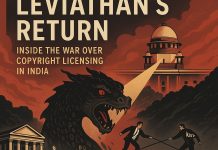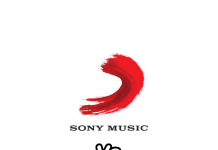UPHOLDING THE RIGHTS OF SINGERS
ARGUING FOR (I) A BROAD AND BENEFICIAL INTERPRETATION OF PERFORMERS RIGHTS AS WELL AS (II) ACCORDING JOINT AUTHORSHIP TO SINGERS IN MUSICAL WORKS.
I am writing this post in light of the Patiala House Court Judgment in the case of Sushila v. Hungama Digital Media Entertainment Pvt. Ltd. & Super Cassettes Industries Private Limited.(Facts, Issues and Judgment covered here) I will conclude as to how this judgment has erroneously ignored the rational precedent given by the HC and has proceeded to render a judgment which is unacceptable for policy as well as interpretational reasons.
INTERPRETATION OF “LIVE” PERFORMANCES
The primary issue I will be dealing with concerns the the extent of according Performers Rights and whether the same includes performances given in a studio or only those before an audience. The definition of Performance is given in section 2(q) the Copyright Act (a provision inculcated in the Copyright Act by the 1994 amendment). It states that “ A performance, in relation to Performers Rights, is any visual or acoustic presentation made live by any performer. Further, explanation 3 of Rule 68 in the Copyright Rules states that “Live” includes a performance given in a studio.
The court has restricted the meaning of the word live to only those performances made before an audience or in a concerted atmosphere. This is an unintended interpretation of the word and an example of strict dependence on the principles of literal interpretation and usage of tools like the Oxford Dictionary. A similar argument was presented in the 2006 case of Neha Bhasin v. Anand Raj Anand[i] before the Delhi High Court and was expressly rejected by the court stating that “ Every performance has to be live in the first instance, irrespective of it being before an audience or in a studio.” The court proceeded on the rationale that live includes any performance which has taken place and delivered irrespective of its purpose for recording in a studio or for a concert. Such an interpretation is imperative as the performer uses sufficient skill and presents their ability irrespective of the forum, once the instance of the performance takes place. It is the purposive nature of Performers Rights to accord rights to royalty and broadcast of the performance solely to one delivering it or on occasion of their permission. Hence limiting it on the condition of there being an audience or it being in a specific forum is completely against the purposive interpretation of Performers Rights as a concept, apart from being a violation of precedent. The only requirement for conferment of Performers Rights is that the performance should not be pre-recorded. It is imperative to be recognised that the correct interpretation of this statement is that the performance should not be solely computer developed. Even a performance in a studio is first performed in the instant and then recorded and worked upon. The sound recording, coming out as a result of the performance, may be edited and mixed, but it needs to be recognised that this is done only after the singer gives his voice and performance prior to this act. The use of sufficient skill and judgment in doing so, which is the main catalytic feature of the expression presented before the audience, cannot be overlooked and ignored from protection.
The court in the case of Sushila has reasoned wrongly relying on the case of IPRS v. Aditya Pandey[ii]. This case states that “ Performers Rights introduced by the 1994 amendment, required a division of the subject pertaining to live performances while communicating the work to the public and when communication was by way of diffusion, hence establishing the intent of the legislature to segregate such performances as live.” Firstly, this is an assertive argument which has been presented for by IPRS, in this case and has not been disputed upon. Consequently the court has not delved into interpreting this question, and so this cannot be considered as a pronouncement by the court. Secondly, even if there is a difference established in communicating – live to the public and by the means of diffusion, the act of communication by diffusion does not preclude protection to the performance which is being recorded and diffused. There has been a performance which is perceived by the audience due to the act of diffusion, and hence performers right ought to be accorded on the same. It happened in the instant and later was communicated by the medium of diffusion. The difference between diffusion and live mentioned in notes to clause 2 (ff) is intended merely in respect of communication to the public, either by a live mode or not. It doesn’t imply that the interpretation of live in Section 2 (q) is to be restrictive to provide for performers rights only in live in the sense of being a performance directly before an audience, and not on recorded and transmitted performances. There is no reason, by logic, for such segregation.
The object of the 1994 amendment which brings in such rights can easily be inferred to from the Statement of Objects and reasons of the Act and other amending Acts strengthening the Performers Rights regime (2012). It specifically says compliance and conformity with certain international standards set by the WIPO Performers and Phonograms Treaty which was recently also acceded by India.
The creative intervention of such performers is deemed to be necessary to give life to musical, dramatic and choreographic works and to facilitate their communication to the public. Performers act as a catalyst to communicate the relevant original content in a work and it has rightly been considered justified to recognise the existence of Performers Rights due to the involvement of skill, creativity and merit deserving legal protection.
The skill which is imputed by singers needs to be recognised in live studio performances and anyone using such performances for commercial communication to the public (through any medium) ought to principally owe royalties for this labour invested. This law has been enacted for the imperative socio-economic welfare of the “performers” class as a whole, to promote creation of output through this much needed acknowledgment of the creative labour put in. Hence this act is argued to be beneficially constructed and accords for a purposive interpretation rather than a strict literal interpretation. This has also been argued by me previously while arguing for a retrospective effect of Section 39 of the Copyright act here .The amount of labour and investment of time to hone skills requisite for performing musical works ought to be acknowledged irrespective of it being before an audience or in a studio, as long as it’s being commercially exploited. As has previously been argued by me here, “A lot of restaurants and music venues gain immense commercial benefit and have a huge customer base because of the kind of music which is played at these venues. This results in direct commercial benefit to these venues due to the skill and labour invested by the singers and performers of the musical work used, who are accorded no benefit for the usage and broadcast of their performance.” Hence, irrespective of the medium of communication to the public, exclusive rights to royalties in case of exploitation of performances needs to be accorded to performers and the definition of “live” needs to be constructed broadly.
A similar debate has already taken place in the UK and a liberal interpretation of live has been followed. A similar interpretation has also been argued by Sir Justice Richard Arnold in his authoritative treatise where he points out that providing such a limited definition of live will result in denying performers rights to a lot of performers including film actors, who essentially perform before the camera itself. Such a limited interpretation would reverse the Queen’s Bench decision in the case of Rickless v United Artists Corps.[iii], where performances in question were that on a film. Hence, the proposed interpretation of “live” has been upheld in the UK. Protection and royalties in the case of a performance in a studio, has also been accorded by the Courts in the UK. [iv] Further, Sir Justice Arnold has argued a that a limited interpretation of “live” would be against Article 7 of the Rome Convention, Article 6 of the WIPO WPPT treaty and Article 14 (1) of the TRIPS Agreement as non-protection of performances not before an audience would result in performers not being able to prevent fixation of their performance without their consent. The definition of live can only be restricted to not include such performances which have parts of a pre-recorded song in a new performance or if the performance is totally and effectively computer generated.[v] Therefore, every performance given in real time be it in front of an audience or in a studio, ought to be covered under the definition of a Performance under Section 2(q).
SINGERS TO BE TREATED AS AUTHORS UNDER SECTION 18 OF THE COPYRIGHT ACT?
The second issue I will be dealing with is the question around the conclusion drawn upon by the court stating that “The plaintiff (singer) cannot be equated to the author of the musical work or the literary work, in so far as they are considered to be performers”. As far as the interpretation of law with respect to performers and authors is considered, this is the warranted interpretation as the rights of a performer under section 39 and the rights of authors under section 18 are intentionally different, due to the performers merely being a catalyst to communicate the works originally conceived by the author.
However, for effective policy purpose, it is argued that it is legally prudent to accord authorial rights to performers in “works”, to the extent of their original contribution to the expression, and not merely communication to the public. [vi]. For e.g. – adding or playing around with notes of a song, or modifying the dialogue of the script (insofar as it is original and results in a variation to the expression- the variation may be trivial or substantial[vii]). In consequence of this argument, singers should be accredited with the status of Joint Authorship in Musical works. It is argued that, specifically in the context of Indian music (the rules of which are substantially different from how western music is composed), a broad definition of the term “Composer” mentioned in section 2(d)(iv), instead of the lay man’s conception, is warranted for to include the singers. This is due to the importance of creative interventions of the singer and positive inculcations of certain variations in the musical works, which meet the threshold of originality. In a musical work, the expression perceived or fixed always consists of the lyrics, melody and the voice over melody. All these three elements play a significant role in the expression perceived by the audience and in the emotive reaction thereafter. Hence they cannot be segregated from the concept of expression in Copyright laws.
Further, the method of composition and songwriting in Indian music varies from the concept of strict notations in the Western system. In the context of Indian music, it is well recognised notion that a note is not a point, but rather a region. A fixed, stable tuning for each note is not a compulsion.[viii]This needs to be recognised in the legal sphere as well in order to bring in an effective rights regime in relation with to the context of the jurisdiction. Blindfolded application of the principle of “a composer (in lay man terms) being the owner of the song” which is prevalent abroad, without accounting for the nature of such compositions, contributions, and the process of song writing specific to India, is a wrong and erroneous methodology adopted by the courts. This makes the law ineffective and practically unviable contextually. The colonial mentality needs to shifted towards orientalism even in the music sphere, it being an essential cultural element of the society. I will discuss this in detail in another post and upcoming article in an International Journal. For now, although I agree with the Court’s interpretation in respect to the broad concept of performers, I disagree when it comes to the conclusion, with respect to the singers, as they ought to be treated as equal to the composers, especially when it comes to India..
[i] (2006) 132 DLT 196
[ii] (2012) SCC Online Del 2645
[iii] 1988 QB 40
[iv] Mad Hat Music v Pulse 8 Record (1993) EMLR 172; Bassey v. Icon Entertainment plc (1995) EMLR 596
[v] Richard Arnold, Performers Rights, (2008 Sweet and Maxwell ed. 4), 2.26
[vi] This argument assumes, of course, that there is no contrary contractual arrangement.
[vii] Reflections on The Triumph of Music: Copyrights and Performers’ Rights in Music Oxford Intellectual Property Invited Speaker Seminar on 20 October 2009.
(Mr Justice) Richard Arnold interpreting the case of Fisher v. Brooker (2006) EWHC 3239 (Ch). (2007) EMLR 9 [41,46]
[viii] A.K. Datta, R. Sengupta, N. Dey, and D Nag. “Experimental analysis of shrutis from performances in Hindustani music “ (2006) ITC Sangeet Research Academy ; Gopala K. Koduri, Marius Miron, Joan Serra Julia, and Xavier Serra, “Computational approaches for the understanding of melody in Carnatic music. In Proceedings of the 12th International Society for Music Information Retrieval Conference” (ISMIR 2011) 263, 264
Image source: here



















